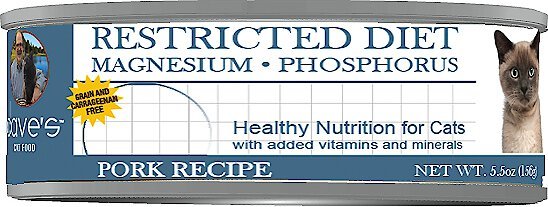Paws & Claws Adult Seafood Mix Recipe Dry Cat Food, 36 lb. Bag
Is your cat a seafood lover? Then boy have we got the ultimate feast for them. The Paws & Claws Adult Seafood Mix Recipe Dry Cat Food features all of a cat’s favorite fishy flavors, including ocean fish, salmon, shrimp, tuna and crab. It’s a recipe that’s sure to get cats excited for mealtimes. And you’ll like it, too, because this dry cat food is formulated with quality protein and essential vitamins and minerals to help support their overall health. Treat your kitty to a bag of Paws & Claws cat food today.
Is your cat a seafood lover? Then boy have we got the ultimate feast for them. The Paws & Claws Adult Seafood Mix Recipe Dry Cat Food features all of a cat’s favorite fishy flavors, including ocean fish, salmon, shrimp, tuna and crab. It’s a recipe that’s sure to get cats excited for mealtimes. And you’ll like it, too, because this dry cat food is formulated with quality protein and essential vitamins and minerals to help support their overall health. Treat your kitty to a bag of Paws & Claws cat food today.
- 100% complete and balanced nutrition for adult cats
- Fortified with several key vitamins and minerals, including calcium and vitamins A and E, to support your cat’s immune system and overall health
- Includes taurine to help promote a healthy heart and bright eyes
- Made with high-quality protein for strong muscles
- Omega-6 fatty acids for healthy skin and shiny coat
- Seafood Mix features all your cat’s favorite flavors: ocean fish, salmon, tuna, shrimp and crab
- Made in USA
- Value size 36 lb. bag of dry cat food
- Formulated to meet the nutritional levels established by AAFCO Cat Food Nutrient Profiles for maintenance
Additional information
| Country of Origin | Made in USA |
|---|---|
| Breed Size | Extra Small, Small, Medium, Large, Extra Large |
| Flavor | Ocean Fish, Salmon, Tuna, Shrimp and Crab |
| Health Features | Muscle Health |
| Indoor/Outdoor | Indoor and Outdoor |
| Life Stage | All Life Stages |
| Primary Flavor | Shrimp, Fish, Tuna, Crab, Ocean Fish, Salmon |
| Packaged Height | 35.5 in. |
| Packaged Length | 4.5 in. |
| Packaged Width | 15.5 in. |
| Manufacturer Part Number | 11000019 |











by Vincent
Can’t beat the price and our cats love it.
by Gal
My cats really enjoy eating this cat food and it keeps a healthy weight on hem.
by Roberta
It is a high quality food.
by Cliff
Both cats seem like it pretty good.